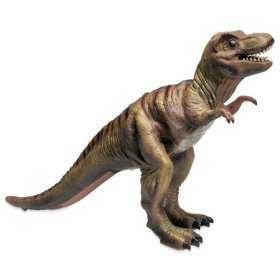- Joined
- Jun 20, 2010
- Messages
- 35,576
- Name
- The Dude

<a class="postlink" href="http://www.dailymail.co.uk/sciencetech/article-2275662/Robotic-finger-door-handle-hidden-chamber-Mars-rover-Curiosity-discovers-mysterious-metal-object-sticking-rock.html#axzz2KR6F1NHg" onclick="window.open(this.href);return false;">http://www.dailymail.co.uk/sciencetech/ ... z2KR6F1NHg</a>
Robotic finger or door handle to hidden chamber? The wild theories after Mars rover Curiosity discovers mysterious metal object sticking out of rock.
• Images show bizarre shiny object protruding from the surface
• Metallic object likely to measure just 0.5cm or less
• Pictures beamed back from Mars show small hole surrounded by dust
• Mission scientists to assess dust to see whether it can be analysed
• Analysis should show whether life has ever existed on the planet
Nasa's Curiosity rover has discovered a mysterious metal object emerging from rock on the surface of Mars.
These images were captured by a camera on Curiosity, and reveal the bizarre finger-like structure protruding from the Martian surface and casting a shadow on to the rock below.
Science buffs have suggested the small, shiny-looking object, which makes for an incongruous sight amid the rocks, could be composed of material less susceptible to erosion than its surroundings.

Robotic finger? An image captured by Nasa's Curiosity rover shows the strange metallic object protruding from the surface of the rock

Incongruous: The unidentified object is seen nestled on the rocky surface
A report on Universe Today said the structure was likely to measure just 0.5cm or less.
It was spotted in the picture beamed back from Mars, which was taken on January 30.
Pictures of the mysterious object emerged after Curiosity drilled its first hole in the surface of Mars, to generate dust it can analyse to detect any traces of life which may once have existed on the planet.
Pictures beamed back from the Martian surface showed a small hole surrounded by a pile of pulverised rock dust, which Nasa hopes to use in sample-collection tests.
In a statement the space agency said Curiosity used both percussion and rotation to bore about 0.8in into the Mars rock as a test in advance of a later full drilling to collect samples.
Robotic finger or door handle to hidden chamber? The wild theories after Mars rover Curiosity discovers mysterious metal object sticking out of rock.
• Images show bizarre shiny object protruding from the surface
• Metallic object likely to measure just 0.5cm or less
• Pictures beamed back from Mars show small hole surrounded by dust
• Mission scientists to assess dust to see whether it can be analysed
• Analysis should show whether life has ever existed on the planet
Nasa's Curiosity rover has discovered a mysterious metal object emerging from rock on the surface of Mars.
These images were captured by a camera on Curiosity, and reveal the bizarre finger-like structure protruding from the Martian surface and casting a shadow on to the rock below.
Science buffs have suggested the small, shiny-looking object, which makes for an incongruous sight amid the rocks, could be composed of material less susceptible to erosion than its surroundings.

Robotic finger? An image captured by Nasa's Curiosity rover shows the strange metallic object protruding from the surface of the rock

Incongruous: The unidentified object is seen nestled on the rocky surface
A report on Universe Today said the structure was likely to measure just 0.5cm or less.
It was spotted in the picture beamed back from Mars, which was taken on January 30.
Pictures of the mysterious object emerged after Curiosity drilled its first hole in the surface of Mars, to generate dust it can analyse to detect any traces of life which may once have existed on the planet.
Pictures beamed back from the Martian surface showed a small hole surrounded by a pile of pulverised rock dust, which Nasa hopes to use in sample-collection tests.
In a statement the space agency said Curiosity used both percussion and rotation to bore about 0.8in into the Mars rock as a test in advance of a later full drilling to collect samples.


